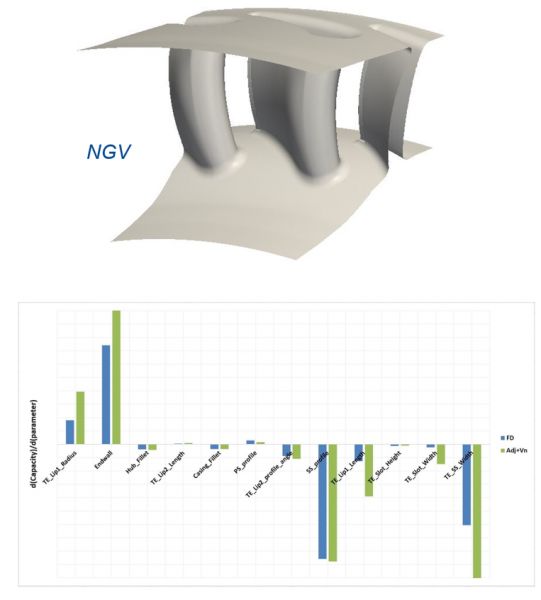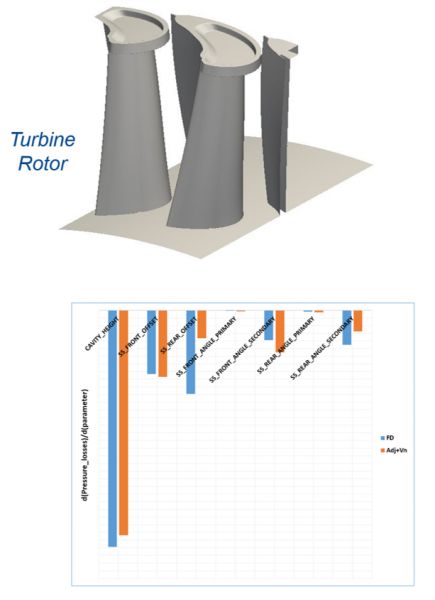Research Fellows
Ilias Vasilopoulos
Early Stage Researcher 11 at Rolls-Royce Deutschland
Regarding CAD-based parameterizations, two approaches were evaluated as promising and relatively easy to integrate within industrial workflows. The first is the design velocity approach developed in Queen’s University of Belfast (QUB). Using this method, the derivatives of the CAD model’s surface with respect to (w.r.t.) the native CAD parameters (also known as geometric sensitivities) are computed by FD between the CAD model before and after a parameter perturbation. The approach is based on projections between discrete representations of the CAD geometries (using the generic STEP surface description), and is efficient and robust. Furthermore, it is the most suitable approach in cases where commercial CAD packages (such as Siemens NX or CATIA V5) are used, i.e. within industrial workflows. In this work, this methodology was coupled with the RRD in-house discrete adjoint solver and the resulting CAD-based adjoint process chain for calculating parametric sensitivities (derivatives of the objective function w.r.t. the CAD parameters) was applied to two large-size industrial turbomachinery components (a Nozzle Guide Vane with a trailing edge cooling slot feature and a Turbine Rotor Blade with a winglet feature), which are illustrated in the figure below. Parametric sensitivities for these cases are compared against central (second order) FD results and good agreement is shown.



